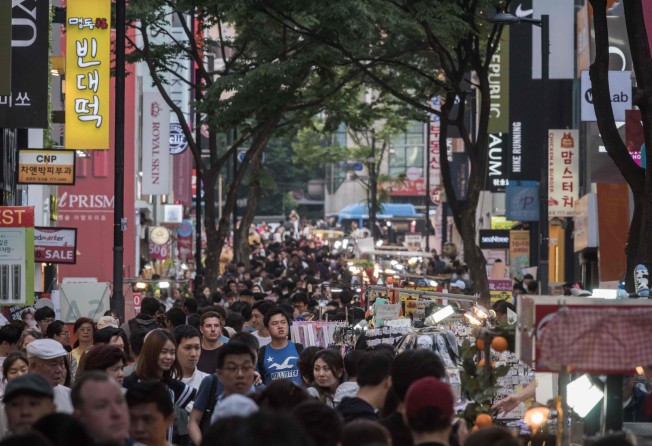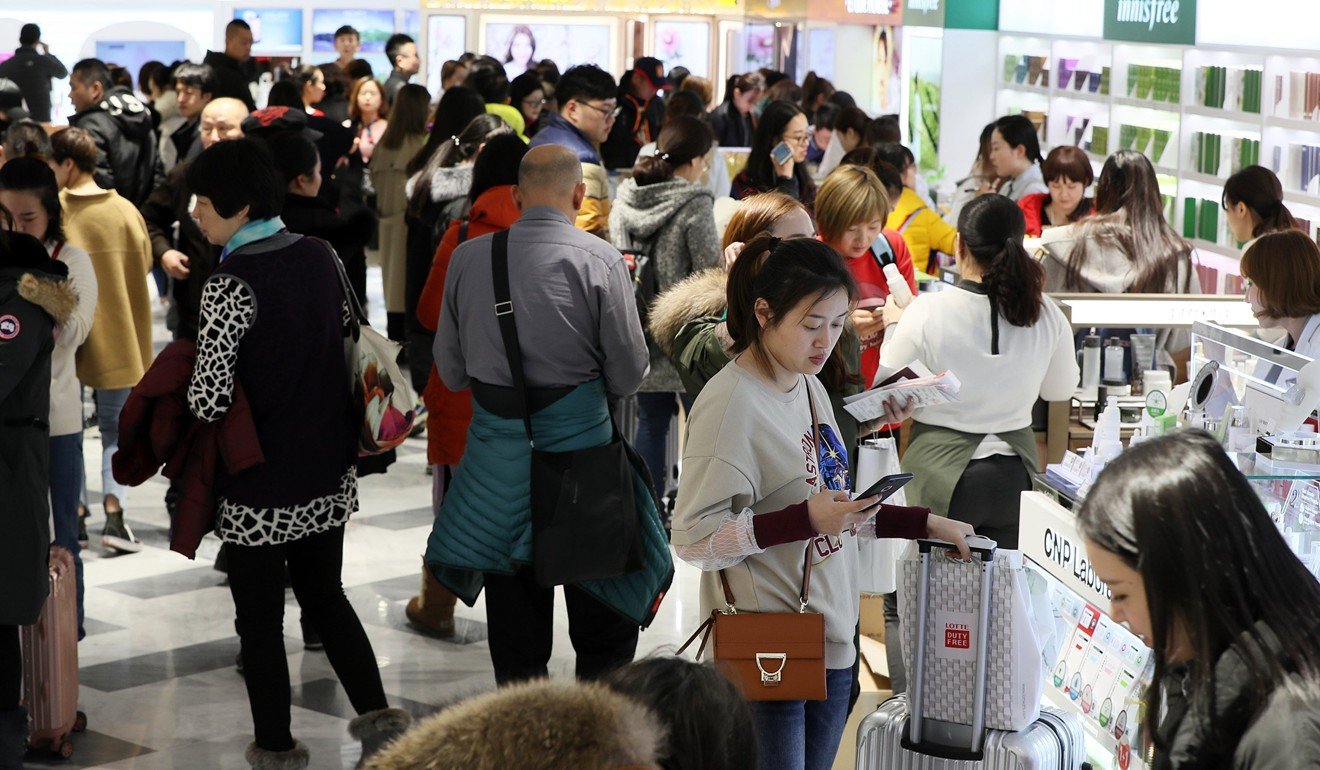
Big-spending Chinese tourists start returning to South Korea
Retailers welcome return of avid shoppers after last year’s row over missile defences prompted a ban on group tours

Big-spending Chinese tourists are returning to South Korea even though a ban on group tours imposed last year following a row over a missile defence system remains in force.
Major department stores reported a sharp increase in revenue from Chinese shoppers during the recent May Day holiday, South Korea’s Aju Business Daily reported on Tuesday.
The total amount Chinese tourists spent in the Hyundai Department Store between April 27 and May 4 rose by over 80 per cent compared with the same period of last year, while its Trading Centre branch in Seoul saw a surge of 174 per cent, the report said.
Lotte Duty Free stores saw a 45 per cent increase in sales revenue over the holiday, 70 per cent of which came from Chinese travellers.
Beijing suspended group tours to South Korea in March last year in response to Seoul’s decision to deploy the THAAD, a network of radars and interceptors designed to knock out incoming ballistic missiles. Seoul said the system was to ward of rising threats from Pyongyang but Beijing said it could compromise its own defences.

Nan Ni, a daigou or shopping agent from Shandong province who travels to South Korea every month on behalf of her clients, said Chinese tourists had been gradually returning since last summer.
The 28-year-old frequently tours the Dongdaemun commercial district as well as well-known stores such as Lotte, Shilla and Shinsegae.
“Basically you now need to rush to buy everything,” Nan said. “You’ll need to queue, and there are all kinds of limitations on the amounts you can purchase.”
“Ninety-nine per cent” of the consumers are Chinese, she said, and about a half are daigou, like herself.
Daigou shoppers make their money by buying products outside the mainland and selling them back home. They mainly specialise in luxury goods, but also buy everyday items such as groceries because they often cost less and are of a higher quality compared with what is on offer in China.
The same factors also help explain why many Chinese tourists are also keen to spend when visiting foreign countries.
Li Han, a 30-year-old Shanghai office worker who had just finished a four-day tour in South Korea with her friend, said they had filled two suitcases with make-up, clothing, jewellery and accessories.
“I bought a diamond ring which would cost 40,000 yuan (US$6,280) in China but less than 30,000 yuan there,” she said. “The customers in the major stores were all Chinese.”

But major Chinese online tour companies, such as Ctrip, Lvmama and Tuniu, still do not offer any South Korean packages.
Wei Na, a senior tour leader from China Youth Travel Service, said it remained a sensitive topic for travel agencies and declined to comment further.
South Korea’s finance minister Kim Dong-yeol said earlier this month that the number of Chinese tourists had been“noticeably increasing” since March, although it had not recovered to pre-THAAD levels.
The latest figures from the tourism bureau show that the total number of Chinese visitors halved to 4.1 million last year compared with 2016, when more than 50 per cent of South Korea’s 17 million incoming tourists were Chinese.